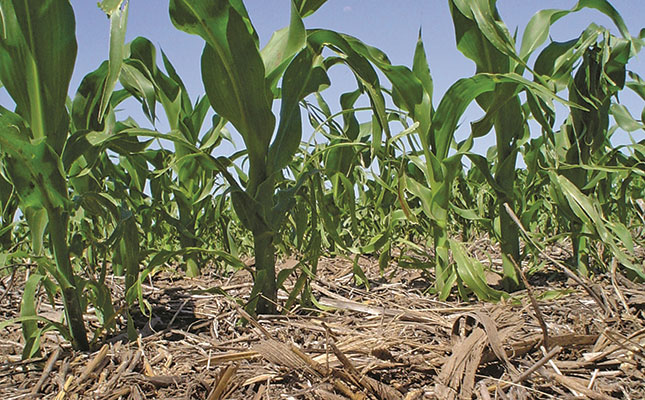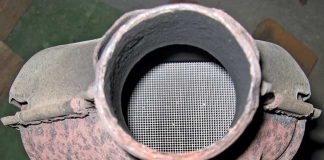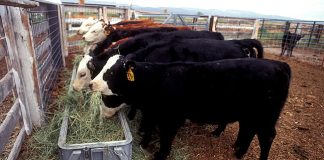
Photo: FW Archive
Soil should be alive at all times, even during periods of frost in winter. This, according to researchers, is the answer to soil health.
In fact, farmers and scientists recently reaffirmed that soil microbes can directly or indirectly help farmers combat the biggest issues they face today. These include environmental changes, biodiversity loss, declining soil health, rising production costs, declining profitability, rising debt and the subsequent risk of losing one’s land due to a loan default.
This was the not-so-hidden message that was conveyed during a farmers’ day hosted by the Highveld Regenerative Conservation Agriculture Study Group in Kinross in collaboration with Asset Research. The latter is a group of scientists focusing on the development of capacity within the field of environmental and natural resource economics, as well as ecological restoration.
Asset Research economist Mary Maluleke, who spoke at the event, said that there was a growing need amongst farmers to find a proper adaptation and mitigation solution to climatic factors.
“Farmers need to hedge themselves against financial stress and ensure that their farming model will be viable over the long term. The solution to this lies in the selection of an appropriate farming system.”
According to her, farmers’ three main options are conventional tillage, no-tillage, and regenerative conservation agriculture. The third option:
- Reduces risk and builds more resilience;
- Has a positive impact on soil and water health;
- Has higher carbon sequestration rates (positive carbon credits);
- Leads to improved, stable production and greater profitability;
- Improves input use efficiency; and
- Reduces capital, maintenance and replacement costs.
All nematodes have a role
Another speaker at the farmers’ day, Danie Bester, who farms near Balfour in Mpumalanga, said that in the past, there had been a focus on ‘bad’ nematodes and micro-organisms that damaged crops. However, in recent years it had come to light that they are food for higher-level predators such as predatory nematodes, soil micro-arthropods and soil insects.
Moreover, they help distribute bacteria and fungi throughout the soil, constantly improving it, provided they are left undisturbed by tillage or excessive chemicals.
“You need to feed your underground microbial ‘allies’, because without them, the rest of the farm will be worth nothing,” he said.
This is also the logic behind the momentum that regenerative conservation agriculture has gained amongst commercial farmers. In an era where conventional farming is becoming increasingly expensive due to rising input costs and consumers are becoming more aware of agriculture’s environmental impact, farmers are being forced to look at alternatives.
Bester said that he once thought that compacted soil was the ideal. “I believed that soil clods were a sign of fertile soil. I thought ‘the bigger the clods, the bigger the maize heads’.”
Through regenerative farming practices, he came to know that no-till has advantages, such as improved water retention. “When I look back today, I’m ashamed at the volume of water I lost due to heavy tillage. This is Africa; our soil needs all the moisture it can get.”
He added that his farm received excessive rainfall during the past season, and if it had not been for his lands’ improved water retention ability, the damage he suffered would have been far worse. His next step is to plant a cover crop on every available hectare, as well as grow more summer cover crops that can be grazed by livestock. This will help him increase his soil fertility levels by means of manure.
“Saline levels can become a problem on my farm. I’ll therefore check the salt content of all of my inputs, even the manure,” he says.
He also plans to minimise the use of herbicide and incorporate more biological products to help generate soil health.
Biology trumps technology
Technology is important, but without biology it is all useless, Bester stressed. “When I started farming, I thought it was important that your tractors had to be green and your soil red. Now I know that soil has to be green and tractor colour doesn’t matter!” he said, referring to the fact that fertile soil is the foundation of agriculture.
Regarding tractors, Bester advised those contemplating switching to no-till practices to avoid using conventional implements. “It’s better to do things right from the start. There’s a big difference between conventional implements and regenerative implements.”
He added that the biggest challenges he had to face were linked to liming, weeds and compaction. The solution was to plant soya bean in rotation, and then, after harvesting, spread lime, run a ripper through the land and plant a cover crop.
Every farmer’s journey on the road to regenerative agriculture is different, and everyone has his or her own challenges to face.
“Initially, I really struggled to control the weeds,” said Bester. “The spectrum of weeds that I encountered changed and I had to gain an understanding of the negative impact of pesticides on my land.”
As he learnt more, he was able to get the problem under control. He advised other farmers to just keep on doing the right thing.
“The more you do the right thing, the more the soil will reward you and eventually you’ll reach your goals. Remember that soil biology is king. That’s why biological products will help a farmer improve the soil far more effectively than chemical products. Cover crops also help to put nutrients back into the soil.”
Biological products and cover crops feed the microbes, which in turn improve water infiltration, increasing water-holding capacity and enhancing nutrient cycling, Bester explained.
Fungicides and pesticides have the opposite effect on soil health. “If you don’t believe me, do an experiment. Plant a test hectare with seed and don’t spray it with any chemicals. I did the trials on my soil and I gained tonnage. Chemicals harm soil quality.”
For similar reasons, Bester said it’s very important to manage fertiliser placement. He also decided to move away from synthetic fertilisers after experiencing a higher yield gain from the use of manure.
“Farmers should remember that it’s not about the number of kernels on a cob. It’s all about weight. Since I’ve moved to conservation agriculture, I’ve been able to increase my mean kernel weight to 72g. My maize cobs feel like bricks of gold.”
Previously, he was able to produce large maize cobs, but they weren’t particularly heavy.
“With all the fancy conventional implements I’ve accumulated over the years, I’d be able to plant maize on the beach and it will grow. But the maize will carry hardly any weight, because it needs nutritious soil to become heavy.”
Curbing rising costs
Maluleke’s studies show that, in future, regenerative conservation agriculture will be the only viable farming option in terms of cash flow. Her studies indicate that within the next 30 years, the average cash flow from conventional tillage will decline to an annual loss of R3 159/ha, while no-till farmers can expect a loss of R862/ha.
However, regenerative conservation agriculture will lead to an average annual cash flow of R1 358/ha within the same period.
“On average, regenerative conservation agriculture is R2 219/ ha more profitable than no-till alone and R4 516/ ha more profitable than conventional farming,” she said.
“Constantly declining soil health (fertility) leads to increasing input volume requirements and costs. This is amplified by rising costs of fertiliser, agrochemicals and overheads. To put it bluntly, the combination is unsustainable. Regenerative conservation agriculture provides the solution to overcome these problems.”
Mpumalanga farmer Nicol de Vos said that farmers might be disheartened by rising interest rates, but South African farmers had faced worse and survived.
In the 1980s, government still determined the price of commodities and farmers had little power. The free-market system opened up many opportunities for farmers.
“Suddenly, we saw a R500/t gap between the highest and lowest price,” said De Vos, adding that everything changed and farmers had to adapt.
“However, input costs have been increasing from just under R4 000/ha in 2005 to over R16 000/ ha in 2022, and the figure keeps rising.”
De Vos said it made sense to him to invest in regenerative agriculture considering the machinery needed to plant a crop.
When farming conventionally, a farmer had to enter the land six times with machinery from planting to harvest. Reduced-tillage farmers need to go in three times, while a no-till farmer goes in only to plant and to spray.
“It’s only logical that the latter not only spends less on fuel and chemicals, but has less wear and tear on machinery. This leads to massive savings.”
De Vos said he did his sums and compared the cost of using conventional farming practices and no-till practices (see Table 2). In the end, traditional farming is simply more expensive in terms of overall input costs.
Email Danie Bester at [email protected]. Visit assetresearch.org.za.











